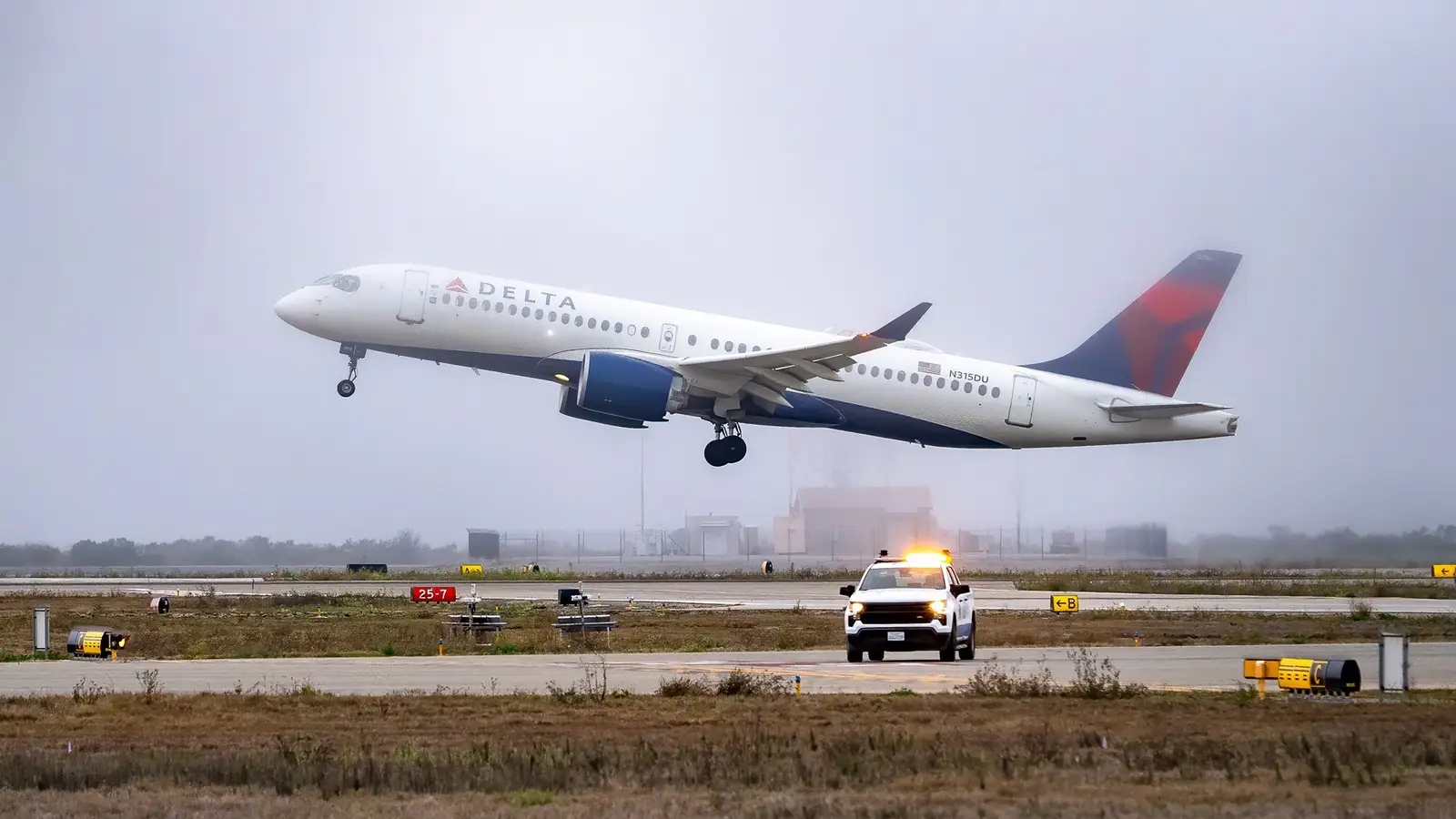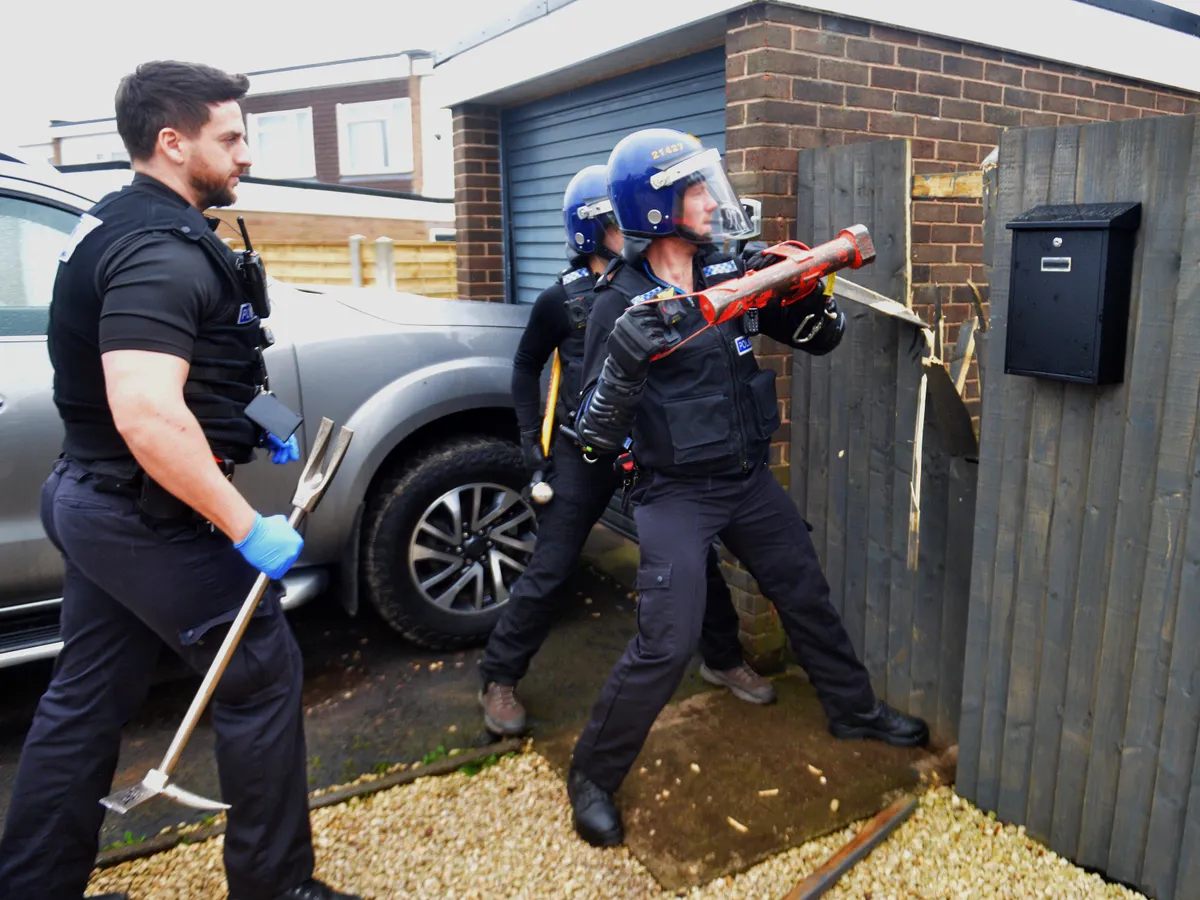
Out of the three major US carriers, one is not like the other in terms of its fleet. United Airlines and American Airlines both focus on their mid-size and large narrowbody aircraft, collectively operating hundreds of Boeing 737 MAX 8 aircraft and holding orders for hundreds of 737 MAX 10 and Airbus A321neo aircraft. Delta, in comparison, is also adding hundreds of large narrowbodies, but also uniquely has a significant fleet of smaller 110-seater Boeing 717s and Airbus A220-100s.
While United and American do fly Airbus A319s, the 737 MAX 8 is the smallest aircraft that either company has on order. Delta, meanwhile, has outstanding orders for 66 Airbus A220-300s and operates 79 A220s. Not only that, but the carrier is still operating a significant fleet of Boeing 717s. But with 80 examples still in the fleet and only 66 A220s still on order, how does Delta intend to replace the Boeing 717 fleet?
Where The 717 Fleet Came From
Delta Air Lines flies 80 Boeing 717s today, making it by far the type’s largest operator. But while Delta has long been a major customer for the McDonnell Douglas DC-9 / MD-80 / MD-90, the airline never actually ordered the 717. Instead, these aircraft were originally owned by AirTran, which was later acquired by Southwest Airlines in 2011. Southwest, being an all-737 operator, looked for ways to offload the 717s, and Delta eventually agreed to take the aircraft.
The 717 (originally known as the McDonnell Douglas MD-95) was hardly a commercial success. The type only sold 156 units throughout its short production life, with airlines generally going for aircraft like the Embraer E195 instead. The 717 also came with Rolls-Royce BR715s, the only commercial application for this engine model. As such, maintenance was expensive compared to more common engines.
Today, Delta and Hawaiian Airlines are the final operators of the 717 worldwide. For Hawaiian, the 717’s BR715 engines have a faster cooldown time than those on newer airliners, making it uniquely well-suited for inter-island operations. Delta, meanwhile, obtained the 717s at a low price, and the aircraft is sized well to serve smaller communities with high frequency, being used essentially as large regional jets.
Delta Air Lines And The Airbus A220
Delta’s order for what was then known as the Bombardier C-Series set off a chain of events that contributed to Bombardier selling the program to Airbus, which renamed it as the A220. Delta initially ordered 75 A220s, and subsequently increased its orderbook to 145 A220s, made up of 45 A220-100s and 100 A220-300s. The A220-100s are configured to seat 109 passengers, one fewer than the 717-200, while the A220-300s can seat 130 passengers.
While the two aircraft are sized similarly, they have little overlap in the routes that they serve. Delta bases the Boeing 717 in Atlanta and Detroit. These planes are often used to serve destinations in the Southern US and the Midwest, with Delta operating multiple 717s per day on these short routes. You’ll often find these planes flying to destinations where competitors primarily use regional jets, with Delta often being the only carrier to use mainline jets.
The Airbus A220 is based out of New York, Seattle, and Salt Lake City. These planes also do not operate the same types of routes out of these hubs. Rather than short-haul routes to nearby cities, the A220s are used on longer flights to take advantage of their incredible fuel efficiency, such as New York to Texas, or Seattle to Washington-Dulles. While the A220 does also operate shorter flights, its route mix is fundamentally different than that of the 717.
Changing Plans For The Boeing 717
Delta only acquired the 717s in the 2010s, and although the operating economics of 110-seater aircraft with mainline staff are difficult, these planes were acquired for a low price, almost certainly improving the math. The A220s were similarly purchased at low prices. While the A220 is similar in size to the 717, these were never designated as direct replacements. Instead, the A220s were to be used for growth and to help facilitate the retirement of the McDonnell Douglas MD-88 fleet.
The COVID-19 pandemic saw all airlines make drastic fleet cuts, and in an effort to cut costs, Delta announced plans to fully retire the 717 fleet by 2025. But as travel recovered more rapidly than anticipated and deliveries of new airliners continue to be delayed, the 717s are needed as much as ever. Delta has retired a handful of examples, but the type is expected to remain in service throughout the rest of the decade.
With 80 units still in service, there are more 717s in service than Airbus A220-300s on order. The A220-300 also seats 20 additional passengers, while the Atlanta-based carrier has zero A220-100s remaining on order, the aircraft that is most comparable to the 717. Delta is also looking to grow its fleet overall, and the airline retired very few 717s while taking deliveries of 79 A220s to date. The reason for this is that the Airbus A220 is not a replacement for the Boeing 717.
Why Is The A220 Not Replacing The 717?
The Boeing 717 is used on regional routes with high frequency, primarily out of Hartsfield-Jackson Atlanta International Airport. This mission calls for an aircraft with low capital costs, but not necessarily one with excellent fuel efficiency, as these flights spend little time in cruise. While the A220s do operate similar routes to their respective routes, these are mainly for aircraft utilization in between longer flights, whereas the 717s are dedicated to this role.
The A220 features an extensive use of composite materials, and it comes with the Pratt & Whitney PW1500G, a highly advanced geared turbofan engine. It’s an airliner optimized for fuel efficiency, and especially fuel efficiency during cruise. While it would lower fuel burn on short-distance routes compared to the 717, focusing the A220 on the 717’s routes would be a waste of the aircraft’s capabilities.
Generally, airlines prefer to use new aircraft on longer routes, as the longer the flight, the more the airline saves on fuel. Delta Air Lines is especially diligent in using its newest planes on its longest routes and utilizing them as much as possible. Older, paid off planes fly fewer hours throughout the day and are assigned to shorter routes where their higher fuel burn is less of an issue.
What Will Replace The Boeing 717
Alongside the 66 outstanding orders for Airbus A220-300s, Delta also holds orders for 74 Airbus A321neos and 100 Boeing 737 MAX 10s. These 240 aircraft will be placed on Delta’s longest routes, with the A321neos and 737 MAX 10s also being placed on the carrier’s highest-volume routes. These will facilitate the direct retirement of the Boeing 757-200 fleet, and it will displace aircraft currently operating these routes.
The Airbus A321 and Boeing 737-900ER are relatively newer aircraft that were delivered in the 2010s, and as such, will fall into a “mid-utilization” category. Delta is actively retiring its Airbus A320-200 fleet, while the A319-100 and 737-800 fleets are to become its oldest narrowbody fleets once the A320s, 717s, and 757s are retired. These aircraft are likely to be displaced from their current routes and will become Delta’s “low-utilization” planes.
These aircraft will likely partially take over the 717’s routes as the type is gradually removed from service. However, the A319 and 737-800 fleets are roughly the same age as the 717. As such, as these planes will be phased out sometime in the 2030s after the 717, this is unlikely to be a long-term solution for these routes. Instead, the A321 and 737-900ER will take over some former 717 routes, with regional jets also serving a role.
Rundown Of Delta’s Boeing 717
The Boeing 717 serves a unique role in Delta’s fleet, and as such, replacing it will not be done by a single aircraft type. Rather, Delta will use a mix of older aircraft to be shifted into this role, along with adding more Delta Connection flights instead of mainline. The Airbus A220 may take over some former 717 routes, but these will be mainly for utilization purposes. The A220, while being the same size as the 717, serves a fundamentally different mission.



